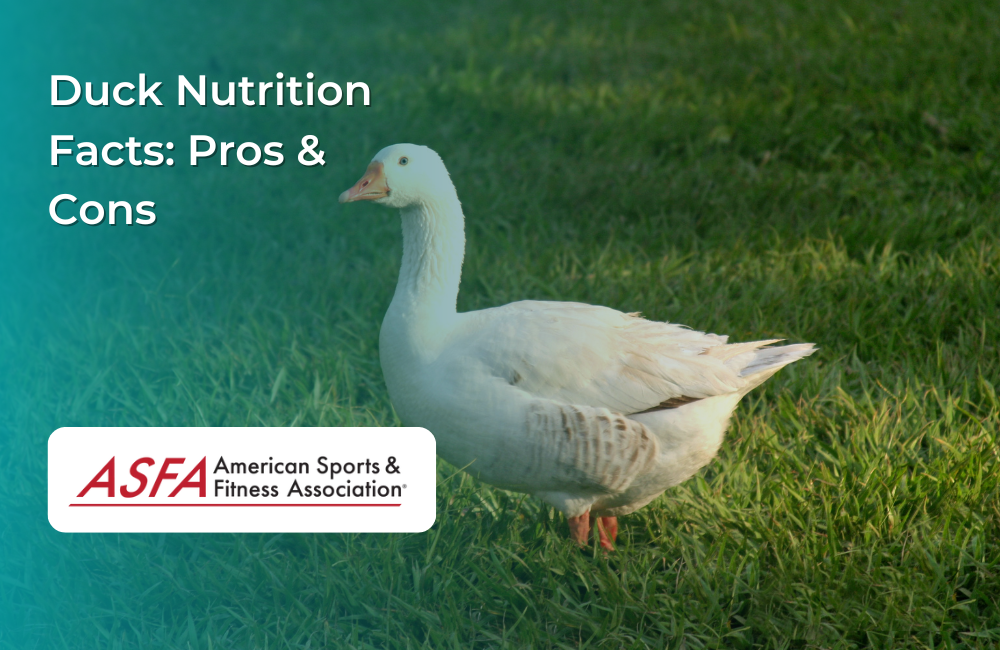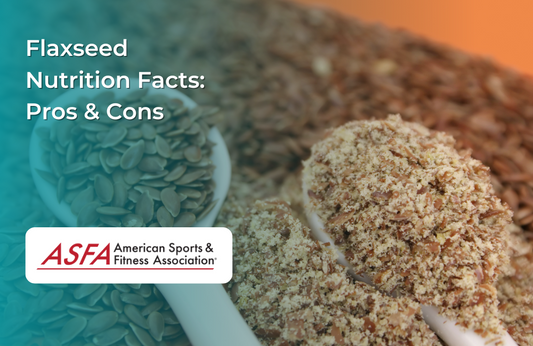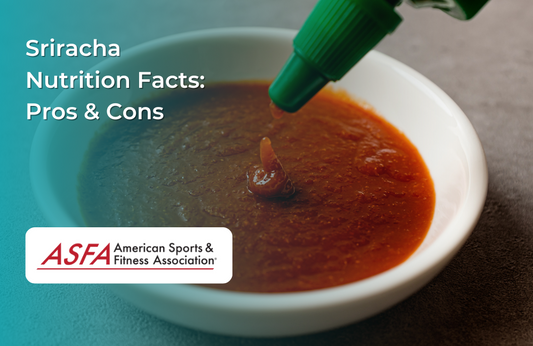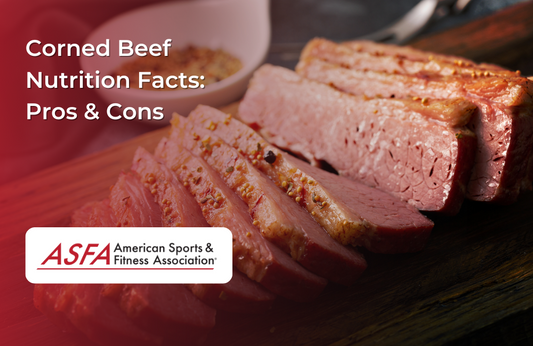Duck is a rich, flavorful meat that provides high-quality protein, healthy fats, and essential vitamins and minerals. While it is known for its tender texture and distinct taste, duck can also be higher in fat than other poultry. Understanding the pros and cons of duck helps in making informed dietary choices.
Duck Nutrition Facts Pros Cons: The Advantages and Disadvantages of Eating Duck
Duck is an excellent source of complete protein, which supports muscle growth, repair, and overall body function. Unlike chicken or turkey, duck contains more healthy monounsaturated fats, which may help support heart health when consumed in moderation. The fat content also contributes to its rich flavor and juiciness. Duck eggs have a similar nutrient profile to chicken eggs but are larger and more nutrient-dense.
The majority of duck meat produced in America comes from the Pekin duck breed. This breed is dominant in the production of duck meat, and there are strict regulations regarding the treatment of ducks raised for meat, including the prohibition of hormones and the limited use of antibiotics.
Duck is rich in essential vitamins and minerals, including iron, zinc, selenium, and B vitamins, which play a role in energy metabolism, immune function, and red blood cell production. Compared to other poultry, duck has a higher iron content, making it beneficial for individuals who need to boost their iron intake. Duck eggs are particularly rich in vitamin B12, emphasizing their health benefits.
When the skin is removed, duck becomes a leaner protein source, making it a versatile meat that can fit into various diets.
What is Duck Meat?
Duck meat is a type of poultry that comes from ducks, which are waterfowl birds belonging to the family Anatidae. Known for its rich, savory flavor and tender texture, duck meat is a favorite among meat lovers and a staple in many cuisines around the world, particularly in Asian and European cooking. Whether you’re enjoying a classic Peking duck or a gourmet roasted duck breast, the unique taste of duck meat can elevate any meal. Beyond its delicious flavor, duck meat is also a nutritious addition to a balanced diet, providing a good source of protein, vitamins, and minerals. Cooking duck can be a delightful culinary adventure, offering a variety of preparation methods to suit different tastes and occasions.
Nutritional Value of Duck Meat
Duck meat is a nutrient-dense food that offers a wealth of essential vitamins, minerals, and macronutrients. A 3-ounce serving of cooked duck meat provides approximately 19.5 grams of protein, making it an excellent source of this vital nutrient for muscle growth and repair. Additionally, duck meat is rich in B vitamins, particularly niacin (vitamin B3), which supports energy metabolism and overall cellular function.
Beyond its protein content, duck meat is a powerhouse of minerals. It is high in selenium, which plays a crucial role in antioxidant defense and immune function. Phosphorus, another abundant mineral in duck meat, is essential for healthy bones and teeth. Iron, zinc, and copper are also present in significant amounts, contributing to red blood cell production, immune health, and various enzymatic processes in the body.
While duck meat does contain fat, much of it is found in the skin. Removing the skin can significantly lower the fat and calorie content, making it a more versatile option for various dietary needs. However, it is important to note that duck meat is higher in saturated fats compared to other types of poultry. This high-fat content has both pros and cons; it can enhance flavor and provide essential fatty acids, but excessive intake may affect cholesterol levels.
Vitamins and Minerals
Duck meat is a powerhouse of essential vitamins and minerals that contribute to overall health and well-being. Here are some of the key nutrients found in duck meat:
-
Vitamin B12: Essential for the formation of red blood cells and energy production, vitamin B12 helps keep your nervous system healthy and supports cognitive function.
-
Niacin (Vitamin B3): Important for skin health and energy metabolism, niacin aids in converting food into energy and supports the function of the digestive system.
-
Selenium: An antioxidant that helps protect cells from damage, selenium supports immune function and plays a role in thyroid hormone metabolism.
-
Iron: Crucial for the production of hemoglobin and red blood cells, iron helps transport oxygen throughout the body and prevents anemia.
-
Zinc: Important for immune function, wound healing, and protein synthesis, zinc also supports normal growth and development during pregnancy, childhood, and adolescence.
-
Phosphorus: Essential for bone health and many bodily functions, phosphorus helps form and maintain healthy bones and teeth.
-
Copper: Important for connective tissue health and immune function, copper also aids in iron absorption and the formation of red blood cells.
Incorporating duck meat into your diet can help ensure you receive these vital nutrients, contributing to overall health and vitality.
Fats and Calories
Duck meat is known for its rich flavor, which is largely due to its fat content. A 3-ounce serving of cooked duck meat contains about 23.5 grams of fat, with 5.5 grams being saturated fat. While the presence of saturated fat might raise concerns, it’s important to note that duck fat also includes a substantial amount of monounsaturated fats, which are considered heart-healthy.
Compared to other animal fats like pork fat (lard) and beef fat (tallow), duck fat is often seen as a healthier alternative. It contains a higher proportion of “good” cholesterol (HDL) and can help reduce “bad” cholesterol (LDL) levels when consumed in moderation. This makes duck fat a valuable addition to a balanced diet, especially when used in place of less healthy fats.
However, when comparing duck fat to olive oil, olive oil is generally considered healthier. Olive oil is lower in saturated fat and contains beneficial polyphenols, which contribute to its heart-healthy profile.
Incorporating duck meat into your diet can provide a flavorful and nutritious option, especially when mindful of portion sizes and preparation methods.
Culinary Uses of Duck
Duck meat is a culinary delight, known for its versatility and rich, savory flavor. Whether you’re preparing a simple weeknight meal or a gourmet feast, duck can be the star of the show. Here are some popular culinary uses of duck:
-
Roasted Duck: A classic preparation that involves roasting a whole duck in the oven, often seasoned with aromatics and spices. The result is a crispy skin and tender, juicy meat.
-
Pan-Seared Duck Breast: Duck breasts are incredibly versatile and have a unique flavor profile that can be treated more like red meat. This method involves searing a duck breast in a hot pan to achieve a crispy exterior while keeping the inside moist and flavorful. Duck breasts can be roasted as well, and they pair wonderfully with sweet fruits and vegetables, showcasing their culinary adaptability. It’s often served with a variety of sauces and sides.
-
Duck Confit: A traditional French dish where duck legs are slow-cooked in duck fat until they are incredibly tender and flavorful. This method not only enhances the taste but also preserves the meat.
-
Duck Sausage: Made from duck meat and spices, duck sausage is a delicious alternative to traditional pork sausage. It’s often served with peppers and onions for a hearty meal.
Duck fat is also a prized ingredient in many kitchens. It can be used for frying, roasting, and even baking, adding a unique depth of flavor to dishes.
Varieties of Duck Meat
Duck meat comes from various duck species, each offering unique flavors and textures that can enhance different culinary dishes. Here are some popular varieties of duck meat:
-
Pekin Duck: The most common breed of duck raised for meat, Pekin duck is known for its white feathers and tender, mild-flavored meat. It’s a popular choice for dishes like Peking duck and roasted duck.
-
Muscovy Duck: Known for its unique flavor and leaner meat, Muscovy duck is often used in specialty dishes. Its meat is less fatty and has a stronger, more gamey taste compared to other duck varieties.
-
Moulard Duck: A cross between a Muscovy and a Pekin duck, Moulard duck is prized for its rich flavor and tender meat. It’s commonly used in the production of foie gras and other gourmet dishes.
-
Khaki Campbell Duck: Known for its high egg production and lean meat, Khaki Campbell duck is a versatile breed that can be used for both meat and egg production.
-
Indian Runner Duck: Recognized for its fast growth rate and lean meat, Indian Runner duck is often used in dishes that require a leaner protein source.
Exploring these different varieties of duck meat can add diversity to your culinary repertoire and introduce you to new and exciting flavors.
Sustainable and Humane Options
When choosing duck meat, considering sustainable and humane options can make a significant difference for both your health and the environment. Here are some options to look for:
-
Free-Range Duck: Ducks that are raised on pasture and allowed to roam freely tend to have a more natural and humane living environment. This often results in better-tasting meat.
-
Organic Duck: These ducks are raised without the use of antibiotics or hormones and are fed organic feed. This option is not only better for your health but also supports sustainable farming practices.
-
Heritage Breed Duck: Heritage breeds, such as Muscovy or Pekin, are often raised in more sustainable and humane conditions. These breeds are known for their superior flavor and quality.
-
Rendered Duck Fat: Render duck fat by slowly cooking the skin and meat to release the fat, then straining it to ensure it is free from impurities. Properly rendered duck fat can be stored in the refrigerator or freezer for future use. This process is a sustainable way to utilize the whole animal and adds a rich flavor to dishes.
Choosing these options ensures that the duck meat you consume is not only delicious but also aligns with ethical and environmental standards. The health benefits of duck meat, combined with sustainable practices, make it a wise choice for conscientious consumers.
Cons of Eating Duck Meat
Duck meat, especially when eaten with the skin, is higher in fat and calories than chicken or turkey. While some of these fats are healthy monounsaturated fats, the saturated fat content is also higher, which may contribute to elevated cholesterol levels if consumed in excess. It is important to monitor the intake of saturated fats to maintain healthy cholesterol levels. However, skinless duck breast has a lower total fat content than roasted skinless chicken breasts and contains primarily healthy unsaturated fats, making it a better option for health-conscious consumers.
Processed duck products, such as duck confit or smoked duck, can be high in sodium and preservatives, which may negatively impact heart health.
Duck is not as lean as other poultry options, making it less ideal for low-fat diets unless the skin is removed before cooking.
Since duck is less common than chicken or turkey, it can be more expensive and less accessible in some regions.
Allergies and Intolerances
While duck meat is generally considered safe to eat, some individuals may experience allergies or intolerances. Common symptoms of a duck meat allergy include hives, itching, swelling, stomach cramps, diarrhea, and in severe cases, anaphylaxis. If you experience any of these symptoms after eating duck meat, seek medical attention immediately.
Additionally, people with allergies or intolerances to other meats, such as chicken or beef, may also react to duck meat. It’s important to be aware of any cross-reactivity and consult with a healthcare professional if you have concerns about food allergies.
For those who can enjoy duck meat without issues, it remains a delicious and nutritious option that can be a valuable part of a balanced diet.
Conclusion
Duck is a nutrient-rich meat that provides high-quality protein, essential vitamins, and minerals while also being higher in fat than other poultry. When eaten in moderation and prepared properly, it can be a flavorful and healthy protein option. Choosing leaner cuts or removing the skin helps reduce the fat content while still enjoying its unique taste.
FAQs
Is duck healthier than chicken?
Duck is higher in fat and iron than chicken, making it a richer but more calorie-dense protein option. Duck eggs have a similar nutrient profile to chicken eggs but are larger and more nutrient-dense.
Can duck be part of a heart-healthy diet?
Yes, when eaten in moderation and prepared without the skin, duck can be part of a heart-healthy diet due to its monounsaturated fats.
Is duck good for weight loss and what are the health benefits of duck?
Duck can fit into a weight-loss diet if consumed in controlled portions and without the skin, which reduces its fat content.
How does duck compare to beef or pork?
Duck is lower in saturated fat than beef and pork, but higher in healthy fats than chicken or turkey.
What is the best way to cook duck for a healthier option using rendered duck fat?
Roasting or grilling without the skin helps reduce fat intake while preserving the rich flavor of the meat.





